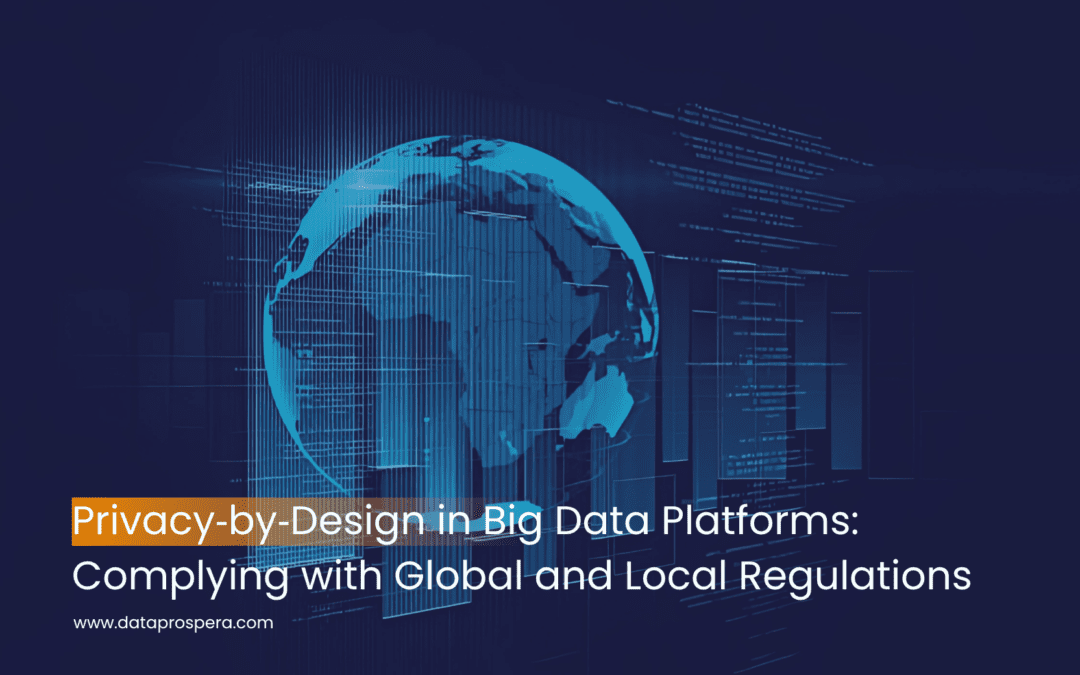1. Why Privacy‑by‑Design Matters in Big Data
Big data platforms—by nature—aggregate vast datasets, often including sensitive personal or proprietary information. With regulations like GDPR (EU), CCPA (California), and PIPL (China) enforcing strict controls, embedding Privacy‑by‑Design (PbD) into data systems from the outset isn’t just best practice—it’s a legal imperativelegiscope.comen.wikipedia.org+14docs.aws.amazon.com+14legiscope.com+14.
Privacy‑by‑Design ensures that privacy isn’t an add-on but a foundational principle.
2. Core Principles of Privacy‑by‑Design
According to global frameworks, the key principles include:
- Proactive, not reactive: anticipate and prevent privacy issues before they occurtickgdpr.euappkodes.com+1legiscope.com+1
- Privacy as default: data protection settings are enabled by default
- Data minimization: collect only necessary data, for limited periodsvoguebusiness.com+6appkodes.com+6technology-innovators.com+6
- End‑to‑end security: encryption and secure storage throughout data lifecyclewired.com+5shardsecure.com+5docs.aws.amazon.com+5
- Transparency and user control: clear consent mechanisms, data access, and portabilityappkodes.com+2tickgdpr.eu+2wired.com+2
- Embedded and verifiable: privacy measures are built into architecture and auditable
3. Technical Implementation in Big Data Platforms
a. Data Classification & Governance
- Classify data by sensitivity, define storage and retention policies in metadata catalogswired.com.
- Automate governance through workflows, ensuring compliance across domains.
b. Encryption & Pseudonymization
- Encrypt data at rest and in transit using strong cryptographic standardsbigfootproject.org+1technology-innovators.com+1.
- Apply GDPR-style pseudonymization: separating identifiers from data supports processing without exposing identityen.wikipedia.org+2en.wikipedia.org+2bizcorplaw.com+2.
c. Privacy‑Enhancing Technologies (PETs)
- Use anonymization, differential privacy, or secure multi-party computation to analyze without exposing raw data.
d. Consent Handling & Data Portability
- Embed consent management into data pipelines; support automated responses to subject access or deletion requests.
e. Federated Metadata and Audit Trails
- Maintain global auditability with federated catalogs, tracking data lineage and access historiesen.wikipedia.org+3docs.aws.amazon.com+3wired.com+3.
4. Benefits Beyond Compliance
- Regulatory readiness: PbD aligns your infrastructure with compliance requirements in multiple jurisdictionsdocs.aws.amazon.com+3shardsecure.com+3legiscope.com+3.
- Customer trust: transparency and strong protection foster user confidenceen.wikipedia.org+15wired.com+15lawsocietyonline.com+15.
- Competitive advantage: build privacy-centric products—an edge in privacy-aware marketscyberogism.com.
- Operational efficiency: proactive design reduces breach response costs and audits.
5. Overcoming Implementation Challenges
- Complex integrations: PbD can require re-architecting legacy systemsshardsecure.com+3legiscope.com+3en.wikipedia.org+3
- Cost considerations: investing in security and encryption upfront, though it pays off in breach avoidancebigfootproject.org+2tickgdpr.eu+2wired.com+2
- Cultural shift: cross-functional collaboration between engineering, legal, UX, and operations is essentialappkodes.com+1bigfootproject.org+1
- Global coherence: working across multiple jurisdictions requires flexible policy frameworks and adaptive pipelines.
6. Best Practices for PbD in Big Data
- Start with Privacy Impact Assessments (PIAs) to identify risks.
- Define data taxonomy and classification upfront.
- Automate encryption and pseudonymization pipelines.
- Choose PETs tailored to analytics and compliance needs.
- Implement consent and subject rights handling in ETL pipelines.
- Monitor, audit, and update privacy controls continuously.
Conclusion
Privacy‑by‑Design is not just a regulatory checkbox—it’s a strategic foundation in big data platforms. By proactively embedding privacy controls, encryption, PETs, and transparent governance, organizations can ensure compliance while enabling powerful analytics. This approach reduces legal risk, enhances trust, and builds a resilient competitive advantage.
If you’re ready to embed PbD into your big data architecture and stay ahead of evolving privacy laws, Data Prospera can design, implement, and manage compliant, scalable, and privacy-first analytics platforms for your organization.


Recent Comments